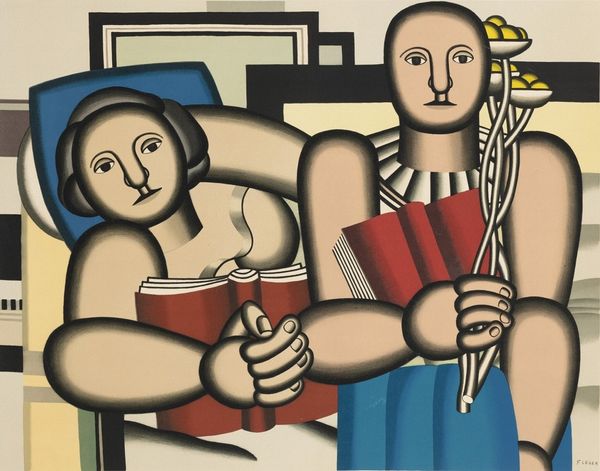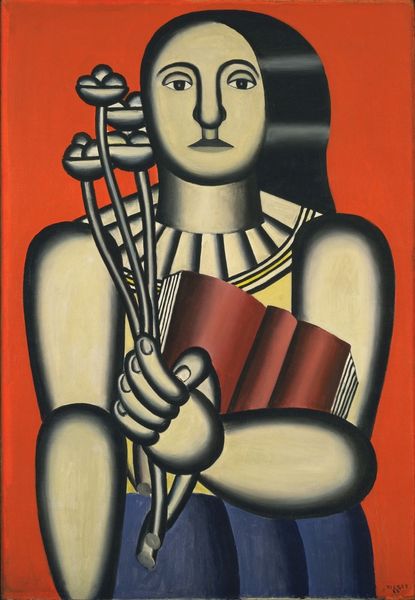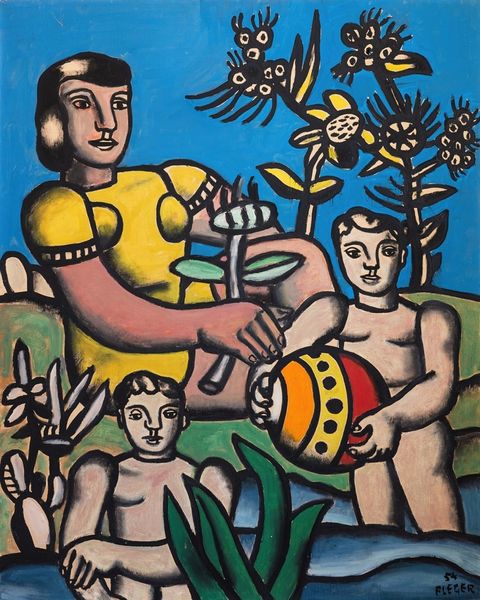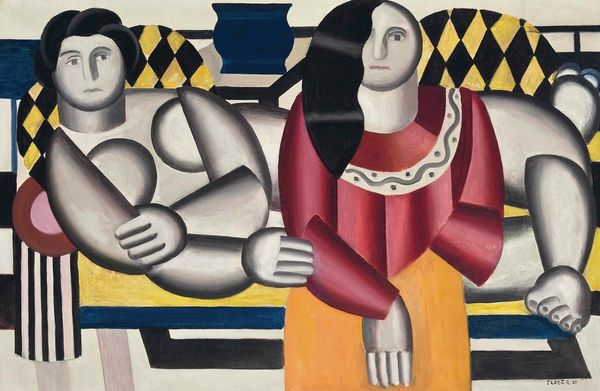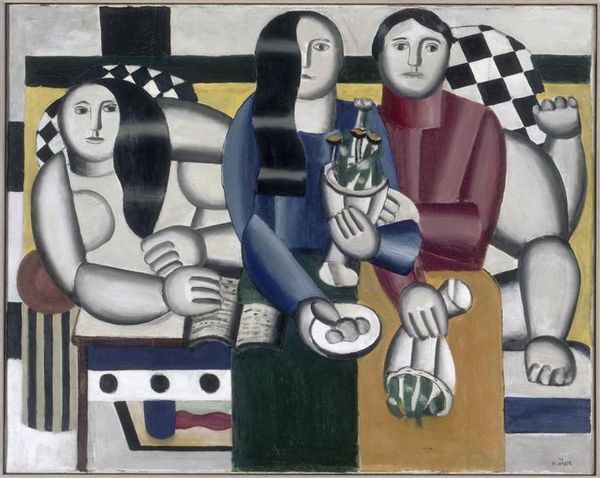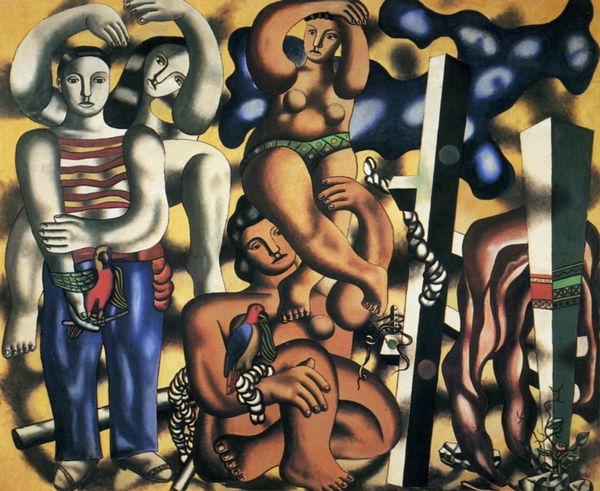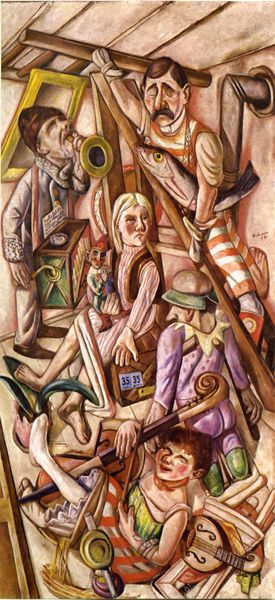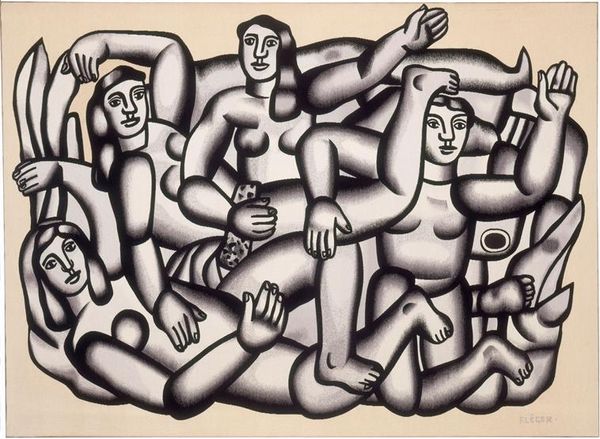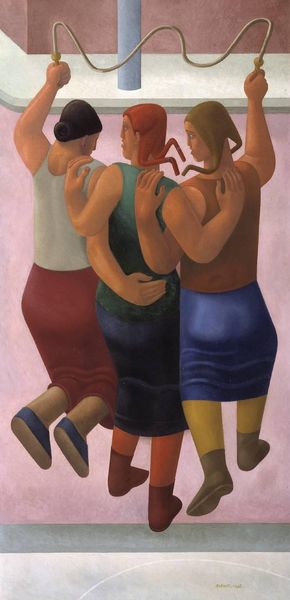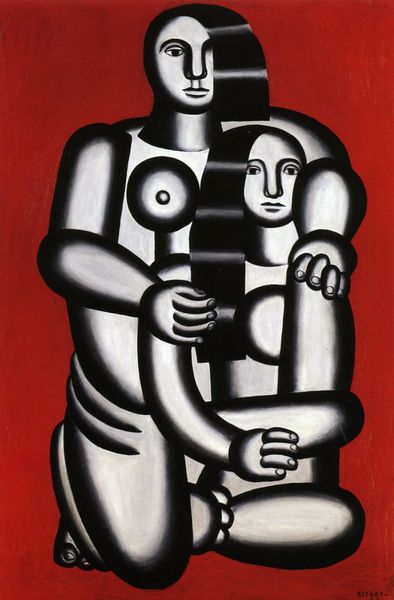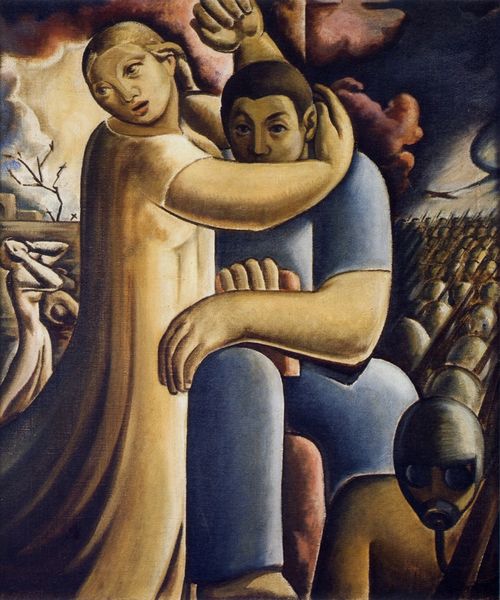
mixed-media, painting
#
portrait
#
cubism
#
mixed-media
#
painting
#
figuration
#
form
#
geometric
#
group-portraits
#
modernism
Copyright: Fernand Leger,Fair Use
Curator: Before us hangs Fernand Léger's "Three Characters," a mixed-media work painted in 1924. Léger's compositions often reflected his experience as a soldier during World War I. What do you make of it? Editor: There's a stark simplicity. The figures are rendered almost as machines, smooth surfaces and cylinders. The limited color palette intensifies the industrial feel. It feels unsettling, and quite monumental at the same time. Curator: Indeed. Léger moved to abstraction after the war and later developed what he called "Tubism," which is clearly reflected in the rounded, mechanical forms he gives his subjects. Remember that Léger felt art needed to engage with the everyday realities of the working class. He wanted art that reflected the modern machine age. Editor: These figures, despite their smooth finish, also evoke classical sculpture. See the way the figures relate—a sense of balance, maybe even a touch of the classical frieze in that composition. The rod held by one seems to suggest authority, direction. What do you read from it? Curator: I think Léger’s use of simple geometric forms suggests he was looking to make images with a visual language rooted in the socio-political values of that period: productivity, efficiency, objectivity, all crucial for cultural recovery post-war. Note also his deliberate positioning within avant-garde circles in Paris where he, along with Le Corbusier, promoted new architectural, design and aesthetic concepts tied to societal renewal. Editor: There’s almost an anti-monumentality here. They don't emote or celebrate individuality in a traditional way. There’s something cold, anonymous. Yet it speaks, through form, of a communal existence and common purpose. Curator: Exactly. In representing collective identity in this way, Leger questions and redefined portraiture as we understand it. Editor: Well, I have certainly looked at it differently. From geometrical composition to its role as commentary on its turbulent, mechanized era, Léger challenges our views.
Comments
No comments
Be the first to comment and join the conversation on the ultimate creative platform.
